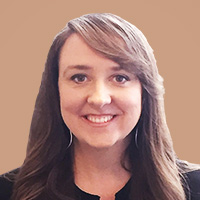Reverse Mortgages Continue to Evolve
New changes designed to limit defaults on reverse mortgages could end up costing borrowers more.


With almost all new reverse mortgage loans backed by the federal government, Uncle Sam continues to wield his power to overhaul the Home Equity Conversion Mortgage, or HECM, program. The goal is to reduce a surprisingly high default rate on the loans—about 10%, far above the default rate on regular home mortgages.
The government hopes its new rules will help stabilize the HECM program and shore up the insurance fund the government uses to pay a lender if a house sells for less than the loan balance. Some of the latest proposed changes from the Department of Housing and Urban Development, laid out in mid May, could cost new borrowers more.
If a borrower doesn't have to make regular payments on a reverse mortgage, how can the loan go into default? Easy, if the borrower doesn't keep up to date with property taxes and homeowners insurance bills.

Sign up for Kiplinger’s Free E-Newsletters
Profit and prosper with the best of expert advice on investing, taxes, retirement, personal finance and more - straight to your e-mail.
Profit and prosper with the best of expert advice - straight to your e-mail.
Under a change that went into effect last year, borrowers must prove they can afford the property taxes and insurance over the life of the loan. HUD now wants to add the cost of utilities to the list of property charges. And that addition would mean that failure to pay utilities could cause the loan to be in default, says Lori Trawinski, director of banking and finance at the AARP Public Policy Institute.
HUD doesn't want more folks kicked out of their homes. Adding utilities to the covered property charges means the financial ability to cover that cost must be considered in the financial assessment that borrowers must pass. The financial test looks at a borrower's credit and income to determine if the borrower can afford the property charges over the life of the loan. Failing the test doesn't necessarily disqualify a borrower, but it can reduce the amount of loan proceeds available.
When a shortfall is detected, the lender is required to carve out a "set aside" from the loan proceeds—effectively reducing the amount that can be tapped. For example, an 85-year-old who failed the test and whose taxes and insurance cost about $740 a month would have to set aside about $62,000 of proceeds to cover those bills. According to recent government data, a set-aside was required for about 10% of borrowers.
HUD's other proposed change that could affect new borrowers is a cap on adjustable-rate loans, which are now the most popular choice with borrowers, says Peter Bell, president of the National Reverse Mortgage Lenders Association. HUD proposes a one percentage point annual cap and a five percentage point lifetime cap on interest-rate changes for an adjustable loan. Currently, rates can rise by as much as ten percentage points over the life of the loan. If that proposal becomes a final rule, Bell says the lowered cap may cause lenders to charge a higher initial rate.
Adjustable-rate loans appeal to borrowers for two reasons: A borrower can tap up to 100% of eligible proceeds, compared with about 60% if they opt for a fixed-rate loan. And the adjustable-rate loan can be taken as a line of credit that can grow at the same interest rate being charged. For example, if you have $100,000 left in your line of credit and the interest rate is 5%, your credit line would increase by about $416 each month ($5,000 a year), says Cliff Auerswald, president of All Reverse Mortgage Company, in Orange, Cal.
Comparison Shop for a Loan
To get a reverse mortgage, you must be 62 or older. The loan is not repaid until the homeowner dies, sells the house or moves out for at least 12 months. The homeowner never owes more than what the home is worth.
Finding a specialized reverse mortgage lender may take some work. The big banks left the market after the financial crisis and have yet to come back. "There's no common household name," says Trawinski.
Start with the National Reverse Mortgage Lenders Association's "Lender Locator". Get quotes from several lenders—interest rates and closing costs will vary, says Auerswald. Download a helpful consumer guide at consumerfinance.gov.

-
 Is 100 the New 70?
Is 100 the New 70?Eating well, exercising, getting plenty of sleep and managing chronic stress can help make you a SuperAger. Funding that long life requires longevity literacy.
By Phil Wright, Certified Fund Specialist Published
-
 Nine Lessons to Be Learned From the Hilton Family Trust Contest
Nine Lessons to Be Learned From the Hilton Family Trust ContestDisclaimers, good communication, post-marital agreements and more could help avoid conflict in a family after the owners of a wealthy estate pass away.
By John M. Goralka Published
-
 403(b) Contribution Limits for 2024
403(b) Contribution Limits for 2024retirement plans Teachers and nonprofit workers can contribute more to a 403(b) retirement plan in 2024 than they could in 2023.
By Jackie Stewart Published
-
 Roth IRA Contribution Limits for 2024
Roth IRA Contribution Limits for 2024Roth IRAs Roth IRA contribution limits have gone up for 2024. Here's what you need to know.
By Jackie Stewart Published
-
 Best Foreclosure Sites for Finding Properties
Best Foreclosure Sites for Finding PropertiesMaking Your Money Last Wondering how to find foreclosed homes for sale for your next residence or to flip for a profit? These websites will guide you to foreclosures and real estate-owned properties to buy.
By Bob Niedt Last updated
-
 Luxury Home Prices Rise as the Rich Dodge High Mortgage Rates
Luxury Home Prices Rise as the Rich Dodge High Mortgage RatesLuxury home prices rose 9% to the highest third-quarter level on record, Redfin reports, growing nearly three times faster than non-luxury prices.
By Kathryn Pomroy Published
-
 Four Tips for Renting Out Your Home on Airbnb
Four Tips for Renting Out Your Home on Airbnbreal estate Here's what you should know before listing your home on Airbnb.
By Miriam Cross Published
-
 Five Ways to a Cheap Last-Minute Vacation
Five Ways to a Cheap Last-Minute VacationTravel Procrastinator? No matter. You can pull off a fun and memorable getaway on a moment's notice — without breaking the bank.
By Vaishali Varu Last updated
-
 How Much Life Insurance Do You Need?
How Much Life Insurance Do You Need?insurance Instead of relying on rules of thumb, you’re better off taking a systematic approach to figuring your life-insurance needs.
By Kimberly Lankford Published
-
 When Is Amazon Prime Day?
When Is Amazon Prime Day?Amazon Prime In 2023 Amazon had two Prime Day events — one in July and another, called Big Deal Days, in October. We expect 2024 to follow the same schedule.
By Bob Niedt Last updated